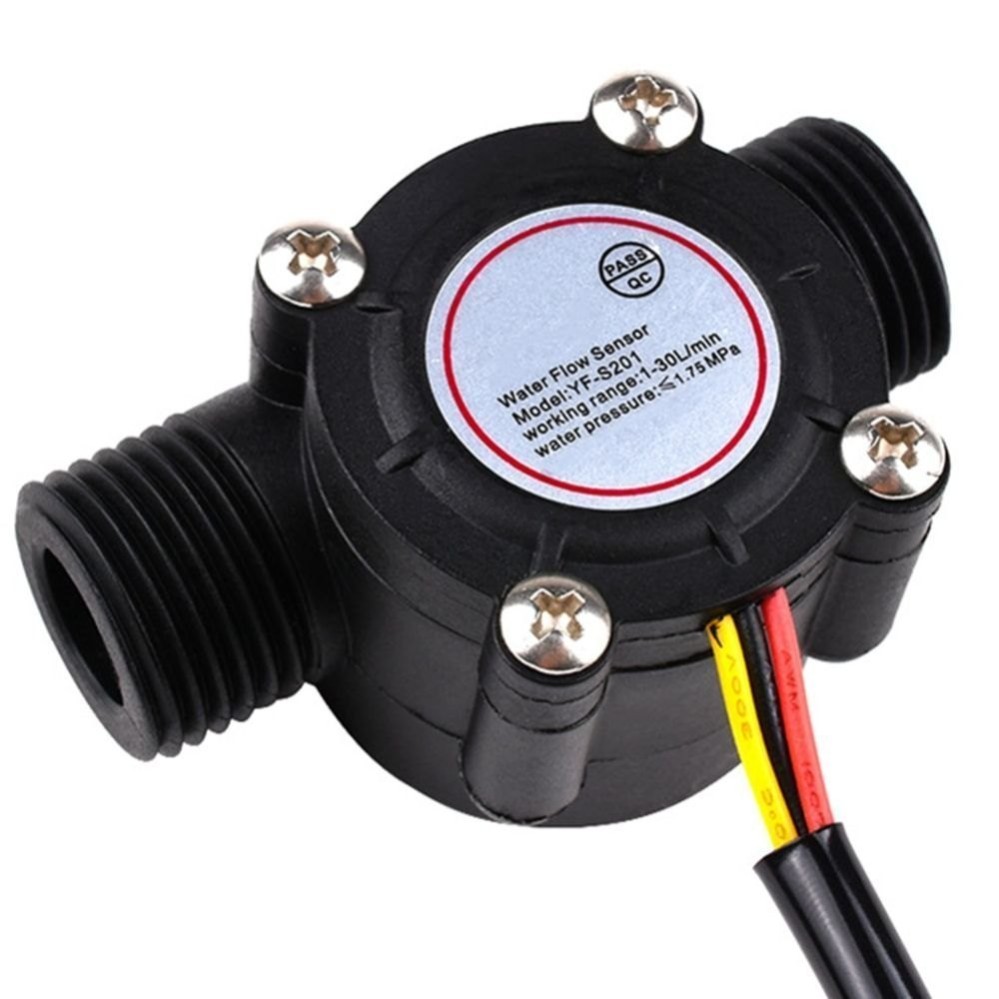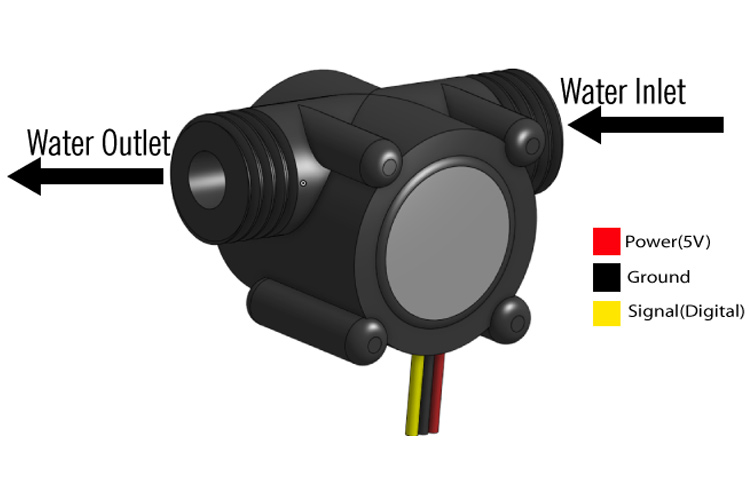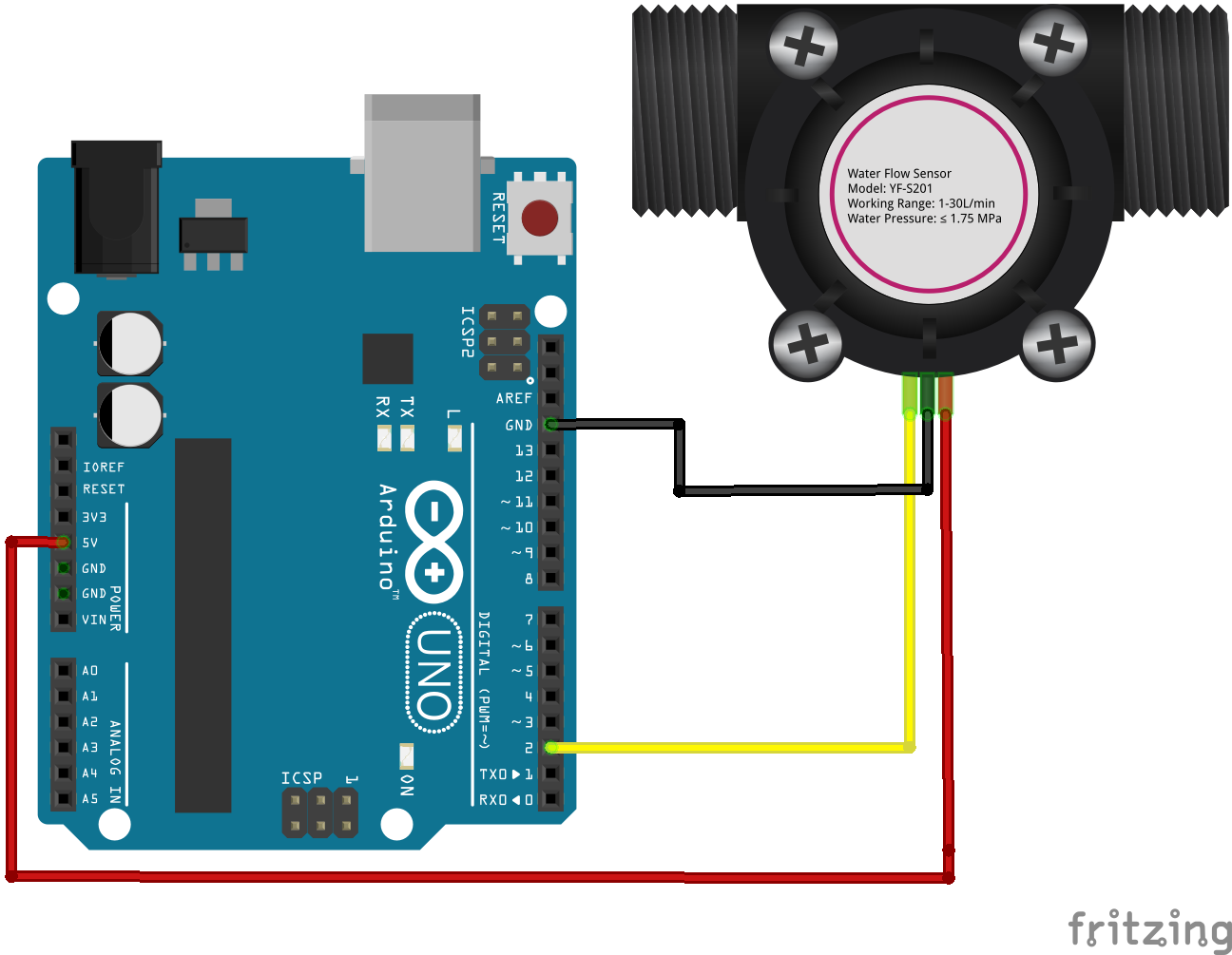








YF-S201 Water Flow Measurement Sensor
A water flow sensor is a specific type of flow sensor designed to measure the flow rate of water. It is used in various sectors such as plumbing, irrigation systems, water treatment plants, and industrial processes where water flow monitoring is essential.
₹ 219 ₹399
399



| Made In : | India |
Add FAQ
A water flow sensor is a device used to measure the flow rate of water through a pipe or channel. It is commonly used in various applications such as water management, irrigation systems, and monitoring water consumption. These sensors typically provide real-time data about the amount and rate of water flow, which can be used for both practical and scientific purposes.
Key Features:
-
Measurement Principle:
- Mechanical Flow Sensors: These sensors use a rotating impeller or turbine that spins when water flows through it. The rotation speed is proportional to the flow rate.
- Electromagnetic Flow Sensors: These sensors use electromagnetic principles to measure the velocity of the water flow. They require conductive fluids to operate.
- Ultrasonic Flow Sensors: These sensors use ultrasonic waves to measure the flow rate. They are non-invasive and suitable for a wide range of fluid types.
-
Output Type:
- Pulse Output: Many mechanical flow sensors provide a pulse output where each pulse corresponds to a specific volume of water that has passed through the sensor.
- Analog Output: Some sensors provide an analog voltage or current output that is proportional to the flow rate.
- Digital Output: Digital sensors provide a direct digital signal representing the flow rate, often interfacing with microcontrollers or other digital systems.
-
Operating Range:
- Flow Rate Range: Water flow sensors come in various sizes and capacities, with different flow rate ranges suitable for different applications. Typical flow rates range from a few liters per minute to several hundred liters per minute.
-
Material and Build:
- Housing: The sensor is usually housed in a durable, water-resistant casing, often made from materials like plastic or stainless steel.
- Compatibility: Sensors are designed to be compatible with standard pipe sizes and connections.
Common Types of Water Flow Sensors:
-
Turbine Flow Sensor (e.g., YF-S201):
- Mechanism: Contains a turbine or impeller that rotates with water flow. The rotation speed generates pulses that can be counted to measure the flow rate.
- Output: Pulse output, which can be converted to flow rate using a known calibration factor.
-
Electromagnetic Flow Sensor:
- Mechanism: Uses Faraday’s Law of Electromagnetic Induction to measure the flow rate. Suitable for conductive liquids.
- Output: Analog or digital output depending on the design.
-
Ultrasonic Flow Sensor:
- Mechanism: Measures the time it takes for ultrasonic waves to travel through the liquid, calculating the flow rate based on the transit time difference.
- Output: Digital or analog output.
Example of a Mechanical Flow Sensor (YF-S201):
Specifications:
- Operating Voltage: Typically 5V DC.
- Flow Range: 1 to 30 liters per minute.
- Pulse Output: Produces pulses where each pulse corresponds to a specific volume of water flow.
- Material: Plastic body with stainless steel or brass fittings.
Wiring and Usage:
-
Wiring Diagram:
- VCC (Power Supply): Connect to the positive supply voltage (usually 5V).
- GND (Ground): Connect to ground.
- OUT (Signal Output): Connect to a digital input pin on a microcontroller or data acquisition system.


// Define the pin connected to the sensor's signal output
const int flowSensorPin = 2; // Digital pin 2 (interrupt-capable)
// Variables to store sensor readings
volatile int pulseCount = 0; // Number of pulses
float flowRate = 0.0; // Flow rate in L/min
unsigned long previousMillis = 0;
const unsigned long interval = 1000; // Update flow rate every 1 second
// Calibration factor for the YF-S201 sensor
const float calibrationFactor = 4.5; // This may need adjustment based on your setup
void setup() {
// Start serial communication for debugging
Serial.begin(9600);
// Set up the flow sensor pin as an input
pinMode(flowSensorPin, INPUT);
// Attach an interrupt to the sensor pin to count pulses
attachInterrupt(digitalPinToInterrupt(flowSensorPin), pulseCounter, FALLING);
}
void loop() {
// Calculate the flow rate every second
unsigned long currentMillis = millis();
if (currentMillis - previousMillis >= interval) {
// Update the flow rate every second
previousMillis = currentMillis;
// Calculate the flow rate in L/min
flowRate = (pulseCount / calibrationFactor);
// Print the flow rate to the serial monitor
Serial.print("Flow Rate: ");
Serial.print(flowRate);
Serial.println(" L/min");
// Reset pulse count for the next interval
pulseCount = 0;
}
}
// Interrupt service routine to count pulses
void pulseCounter() {
pulseCount++;
}
0 Reviews For this Product












.jpg&width=225&quality=80)
